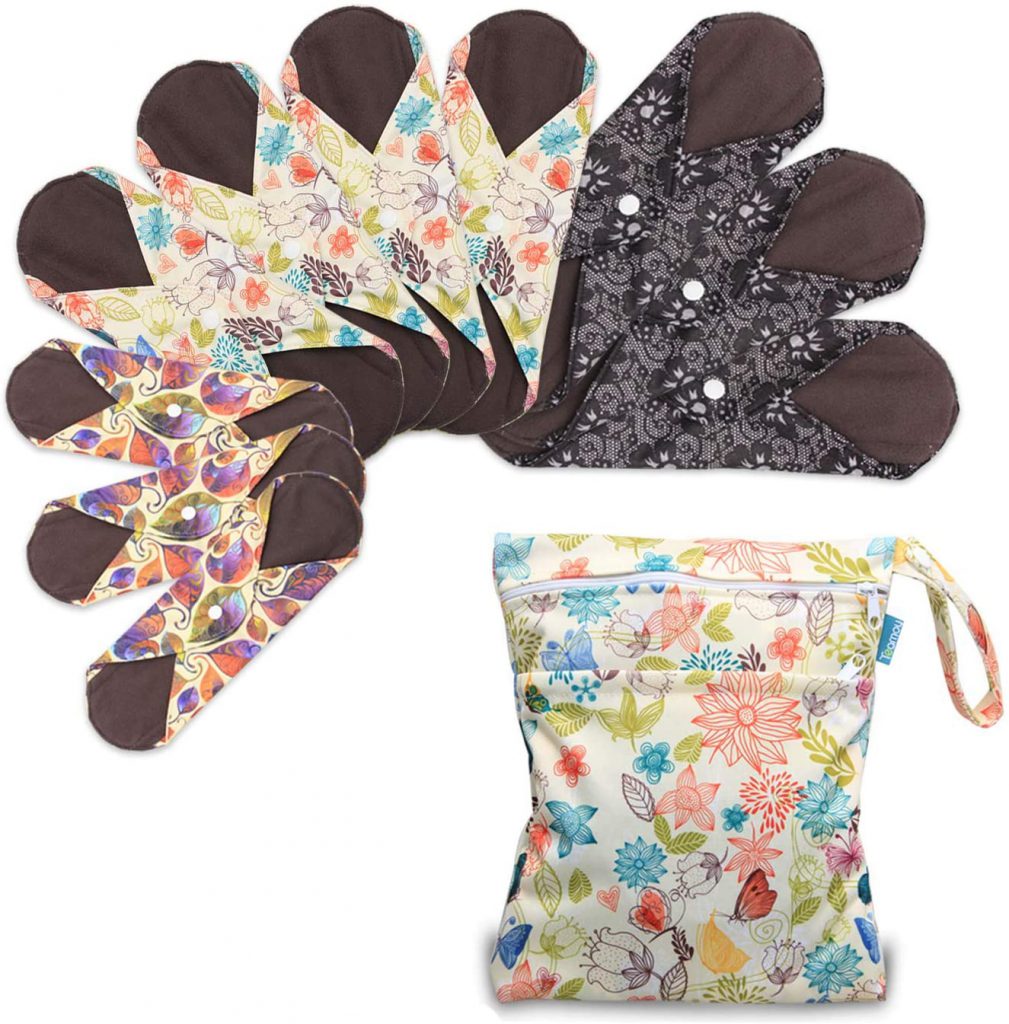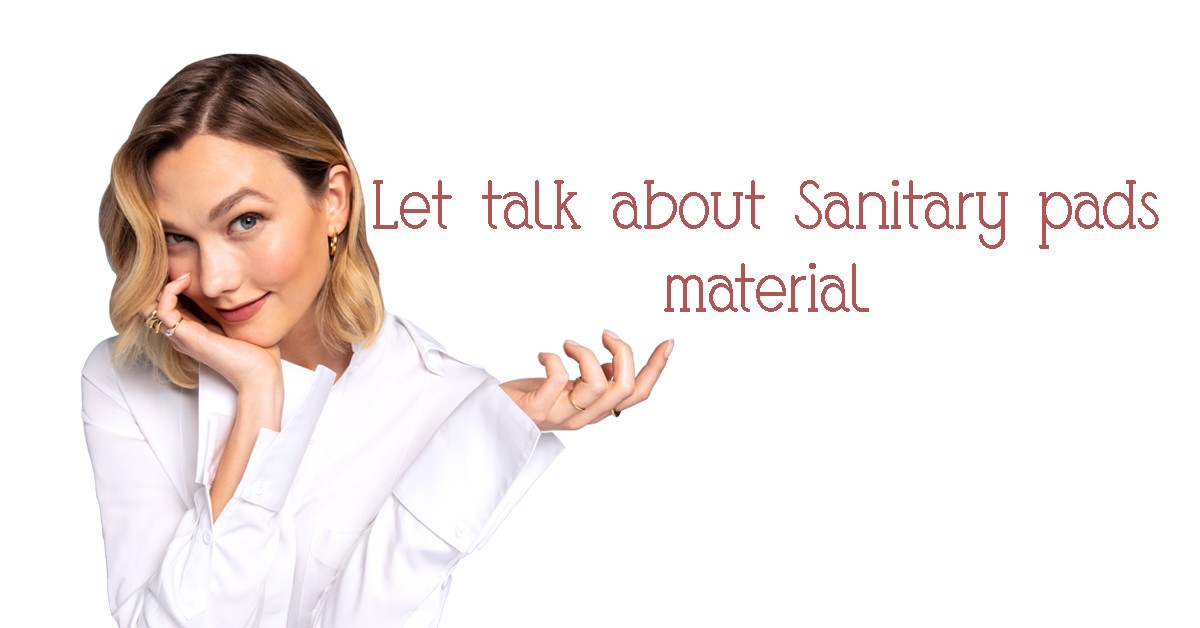It’s reusable, it’s washable, and it’s cost effective. So why are there still so many women who do not want to use these pads? Even though they are very good for the environment, many women find them disgusting, thinking that they are crawling with bacteria and other yucky things. So what is the truth behind these reusable and washable sanitary pads?
The conventional sanitary pad
Having a quality material for the inner lining of the sanitary pad is obviously very important. But what exactly is on the inside? Let’s take a look at what a conventional pad is made up of to get a better idea of what to look for. When you deconstruct a pad, you will first find the top sheet which is made to give you comfort and softness. Next up is the transfer layer that guides the menstrual blood to the centre of the pad. Then we find the absorbent core, which captures and holds the menstrual blood. Right at the bottom is the waterproof barrier that helps to prevent leaks.
There has been many claims that conventional pads are 90% plastic, but a quick search on Uncheckable: “Conventional menstrual pads are made up of 90% plastic materials” – eufactcheck.eu shows that although probable, it cannot be proven outright. But there is merit to this claim made by Natracare. The common composition of a conventional sanitary pad is made up of polypropylene in the first layer, polyester fibres in the second layer, “superabsorbents” in the third layer, and a polyethylene coating in the fourth layer. The “superabsorbents” referred to is a shortened form of superabsorbent polymers, which is polyacrylate.
A better option
Now that you’ve decided that all that plastic might be bad for you and your environment, what are the alternatives? Like Natracare, there are many alternatives available that is completely plastic free, chlorine free, perfume free, and made of natural materials. The next question is of course what the natural materials are. This normally consists of organic cotton and sustainable wood pulp. The way that a natural sanitary pad is made is very similar to a conventional pad, except that the materials that are used are different. Your top layer is made from the same material as tea bags, which draws the menstrual blood away from the skin and into the pad. The second layer is 100% cotton that holds and transfers the blood to the absorbent core. The third layer is made from a form of algae that provides most of the absorbency. The fourth layer, which is also the moisture barrier, is made of a corn-based material.
One step further

The question everyone is burning to get an answer to… how hygienic is reusable sanitary pads. It turns out that gynecologists’ are very pro reusable pads. They have consensus on the fact that it is more comfortable and less likely to cause allergic reactions or rashes in comparison to most other sanitary products. Because the material is soft and breathable it also prevents foul smells to emanate from your vagina. A very big bonus point in the arena is that they are much less likely to cause toxic shock syndrome.
Reusable and washable sanitary pads are normally made of natural fibers such as cotton, hemp and bamboo. There are amazing do it yourself videos that even show you how to make your own reusable and washable sanitary pad. But, as with every single sanitary product out there, the golden rule stands. Use it properly! Reusable and washable sanitary pads are amazing, but they need to be washed properly between uses. If you don’t clean it properly, you could end up giving yourself a nasty bacterial infection. But that goes for any menstrual product, and women shouldn’t be discouraged from using reusable and washable sanitary pads.
How it’s made
The companies that make reusable and washable pads will normally use cotton or hemp along with a material that has waterproof qualities. But if you are good with a sewing machine, then you can go one step further and make your own. You simply need a template to work with, and your materials. Getting your hands on 100% cotton is easy, but hemp is a bit more difficult to get a hold of. Ask your local haberdashery which materials repel water, and you have your base. Then you just need some thread, some velcro, and a sewing machine. There are many different patterns to choose from, and a plethora of videos to choose from to help you along the way. You can check out How to Make Reusable Menstrual Pads – YouTube to get you going, and also follow the links to many other do it yourself videos.
In conclusion
There are some things to take into consideration once you’ve decided that reusable and washable pads are not disgusting or unsanitary. If you have a blood-borne infection, then you need to be extra careful when you store and wash your pads. As with all sanitary products, you should change your pad regularly to avoid irritation and infection. If you can, then you should wash your pad immediately after using it. If you cannot do this because you are out of the house running errands or eating out at your favourite restaurant, then you should store it in a ziplock bag until you can wash it. Once you get to washing it, you should pre-soak it in lukewarm water for 30 minutes, followed by hand wash or gentle machine wash. Use soap or detergent.
The best way to dry it is in direct sunlight and open air, as these act as natural disinfectants. Once you get into the rhythm of washing your pads on a daily basis, you can start truly enjoying the money you saved on buying conventional pads, and pat yourself on the back for helping to save the planet one pad at a time.
